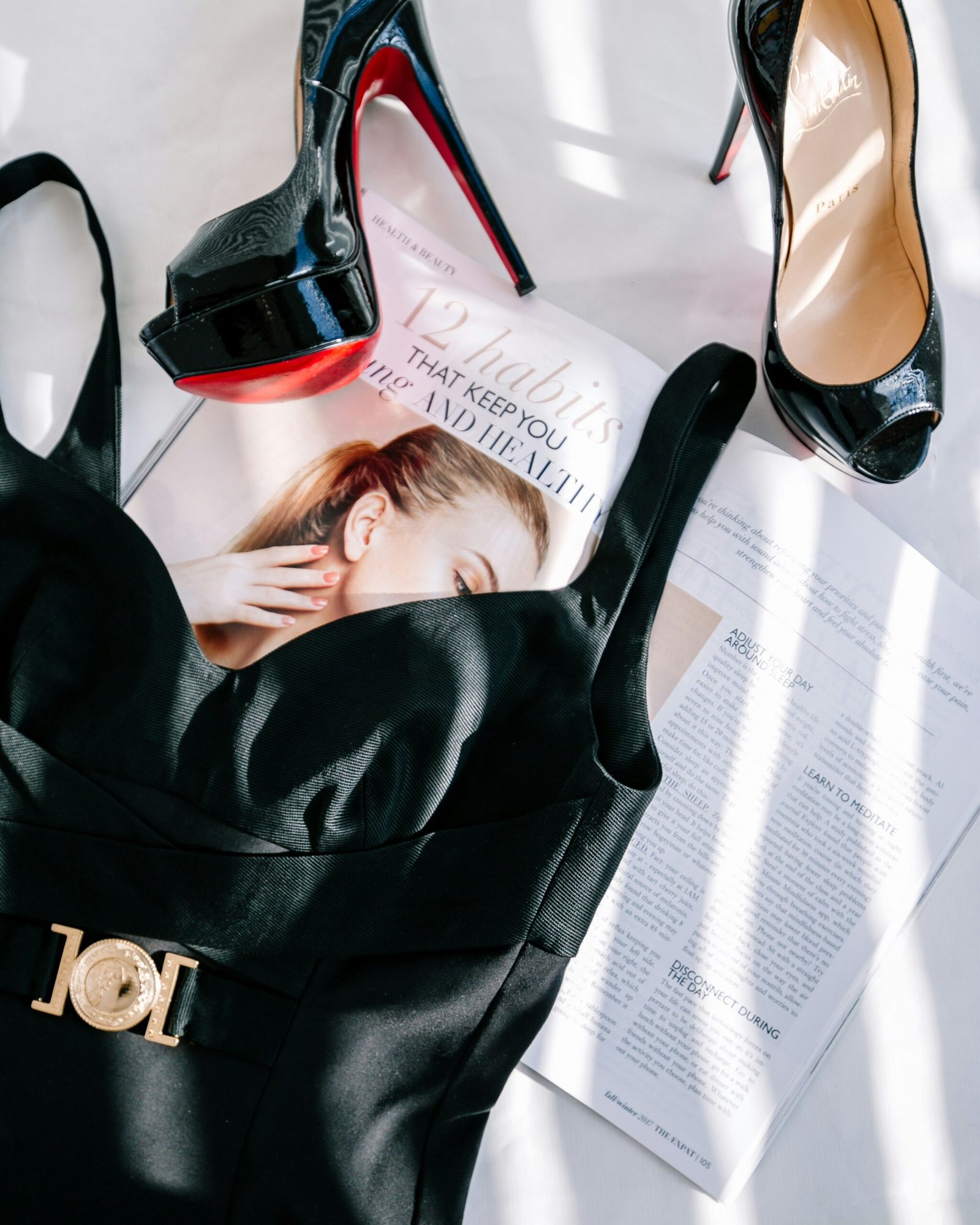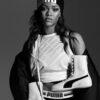
Louis Vuitton vs Supreme: A Comparative Analysis & The Latest Design Trends in Balenciaga
History and Background of Louis Vuitton and Supreme
Louis Vuitton, founded in 1854 by the French designer of the same name, began its journey with a focus on crafting bespoke trunks and luggage. Renowned for its exceptional quality and revolutionary flat-topped trunks that were easily stackable, Louis Vuitton gained significant recognition among the Parisian elite. The brand’s famous monogram canvas was introduced in 1896 to combat counterfeiting and has since become an iconic symbol of luxury and exclusivity. Key milestones in Louis Vuitton’s evolution include the creation of its first handbag collection in the 1930s, expansion into apparel and shoes, and pivotal collaborations with influential designers such as Marc Jacobs and Virgil Abloh.
Supreme, on the other hand, was established in 1994 by James Jebbia in New York City. Rooted deeply in the skateboarding culture, Supreme quickly built a reputation for its unconventional philosophy and unique approach to streetwear. The brand is celebrated for its innovative and often provocative designs, which have captured the attention of youth subcultures worldwide. Over the years, significant milestones for Supreme include collaborations with other leading brands such as Nike and The North Face, as well as artist partnerships with icons like Damien Hirst and Takashi Murakami.
While both Louis Vuitton and Supreme have carved out dominant positions in the fashion industry, their brand philosophies diverge significantly. Louis Vuitton exudes timeless luxury and sophistication, appealing to affluent consumers who appreciate classic design and heritage. In contrast, Supreme thrives on its underground, rebellious aura, targeting a younger demographic that values individuality and cultural resonance. Despite these differences, both brands have successfully cultivated loyal followings and continue to push the boundaries of fashion innovation.
Collaborations and Synergies: The Epic Louis Vuitton x Supreme Partnership
The Louis Vuitton x Supreme collaboration that debuted in 2017 marked a significant moment in fashion history, as it bridged the gap between high-end luxury and streetwear. The partnership sparked widespread conversations among enthusiasts, with initial reactions ranging from excitement to skepticism. For Louis Vuitton, a house synonymous with luxury, and Supreme, a brand revered in the streetwear community, this unexpected union was both a strategic and cultural maneuver.
Strategically, the collaboration allowed Louis Vuitton to tap into a younger, more diverse demographic. Supreme, known for its ability to generate buzz and desirability, provided an avenue for Louis Vuitton to remain relevant while expanding its audience. Conversely, Supreme benefited from the association with a storied luxury brand, reinforcing its status in the fashion world. The collaboration was not just about merging two distinct styles; it was an exploration of how luxury and street fashion could coexist, thereby broadening the appeal of both brands.
The impact on both the luxury and streetwear segments was profound. The collaboration introduced a new era where high fashion and streetwear were no longer seen as mutually exclusive. The collection featured a range of items, from logo-emblazoned hoodies and skateboards to LV-monogrammed trunks and bags. These pieces were highly sought after, leading to long queues and rapid sell-outs upon release. The commercial success was undeniable, as items quickly became collector’s pieces, often reselling at exorbitant prices.
Critically, the collection received mixed reviews. While some praised it for its boldness and innovation, others viewed it as a risky move for Louis Vuitton, fearing it might dilute the brand’s luxury appeal. However, the overall reception highlighted the undeniable influence of the collaboration. It shifted the fashion landscape, proving that cross-pollination between different fashion segments could yield remarkable results.
In conclusion, the Louis Vuitton x Supreme partnership is more than a mere historical footnote. It set a precedent for future collaborations, illustrating the power and potential of blending luxury with streetwear. Its success underscored the importance of adaptability in the ever-evolving fashion world, paving the way for similar ventures in the industry. Through this collaboration, both brands not only solidified their positions but also redefined the boundaries of contemporary fashion.
Design Philosophy: Comparing the Aesthetics of Louis Vuitton and Supreme
Louis Vuitton and Supreme, while both iconic in the fashion industry, represent vastly different design philosophies. Louis Vuitton, a French luxury house, exudes opulence, sophistication, and timeless elegance. Their approach to fabric selection involves the highest quality materials, with a strong focus on durability and lavishness. The color palettes often feature classic tones such as blacks, browns, and golds, frequently adorned with the distinctive LV monogram. Design intricacy is paramount; from their meticulously crafted handbags to their prêt-à-porter collections, attention to detail is a hallmark of the brand.
In contrast, Supreme is synonymous with the streetwear culture. Originating from New York City, the brand embodies urban, edgy, and youthful aesthetics. Fabric selection skews towards comfort, incorporating materials like cotton, fleece, and jersey. Supreme’s color palette is bolder and more vibrant, featuring striking reds, whites, and often juxtaposed with graphics or logos that carry a rebellious and anti-establishment sentiment. The designs are less about intricate craftsmanship and more about making a bold statement through simplicity and iconic branding.
When it comes to interpreting current fashion trends, Louis Vuitton leans towards evolution rather than revolution, subtly incorporating contemporary elements while maintaining their heritage. This is evident in their seasonal collections which often blend historical influences with modern innovations, creating pieces that are both current and timeless. Similarly, their runway presentations are theatrical, often set against grand backdrops, reinforcing their status as a luxury brand.
Conversely, Supreme integrates trends in a more overt and immediate manner. The brand thrives on being at the forefront of street style, drawing heavily from skate culture, music, and collaborations with artists and other brands. This adaptability is reflected in their seasonal collections, which can pivot quickly based on what is relevant and in-demand. Supreme’s runway is the streets; their products are showcased through lookbooks and urban storytelling, emphasizing real-world wearability and cultural relevance.
In conclusion, the design philosophies of Louis Vuitton and Supreme, though divergent, each hold significant influence in the fashion world. Their methods of fabric selection, color palette choices, and trend interpretation underscore the unique spaces they occupy within the industry.
The Future of Balenciaga: Exploring the Latest Design Trends
Balenciaga, under the visionary leadership of Demna Gvasalia, has consistently pushed the boundaries of fashion, blending high art with everyday elements. Gvasalia’s creative direction emphasizes a compelling mix of tradition and avant-garde, redefining the brand’s identity and maintaining its relevance in the highly competitive luxury market. Recent runway shows have unveiled a slew of daring and unconventional pieces, showcasing the brand’s innovative approach.
One prominent trend in Balenciaga’s latest collections is the juxtaposition of oversized silhouettes with sharp tailoring. This interplay of proportions creates a dramatic yet sophisticated aesthetic, evident in their voluminous coats and structured blazers. Additionally, Gvasalia has embraced the resurgence of streetwear influences, incorporating bold graphic designs and relaxed fits, which resonate well with younger fashion enthusiasts.
Another notable aspect of Balenciaga’s recent work is its dedication to sustainability. The brand has increasingly experimented with eco-friendly materials and production methods, reflecting the growing importance of environmental consciousness in luxury fashion. Collections feature recycled fabrics and innovative garment construction techniques that minimize waste, indicating a commitment to ethical practices.
Color and texture play a crucial role in Balenciaga’s design language. The use of vibrant hues, alongside contrasting textures such as plush velvet and sleek leather, adds depth and complexity to their pieces. These elements not only capture attention but also set Balenciaga apart from its contemporaries, reinforcing its position as a trendsetter in the luxury fashion sector.
Looking ahead, Balenciaga is poised to continue its trajectory of innovation and boundary-pushing creativity. Gvasalia’s fearless approach to design suggests that the brand will keep exploring new sartorial expressions, potentially delving deeper into digital fashion and technological integration. As fashion becomes increasingly intertwined with technology, Balenciaga’s willingness to experiment positions it well to lead the charge in the next evolution of luxury fashion.



